From the CityLab website:
Teresa Mathew, who is an editorial fellow at CityLab, just wrote L.A.'s Air Pollution May Be Harming Teen Brains, should know better. Or maybe she does and wrote it anyhow. For whatever reason, she uses just about every trick in the book to draw an imaginary connection between air pollution (1,2) and brain development in teens.
Let's take a look at the article and what is wrong with it. There is plenty.
"We already know that invisible elements of our environment can harm us: Lead exposure can lower a child’s IQ, and air pollution kills more than 3 million people a year."
Right off the bat, there are three problems:
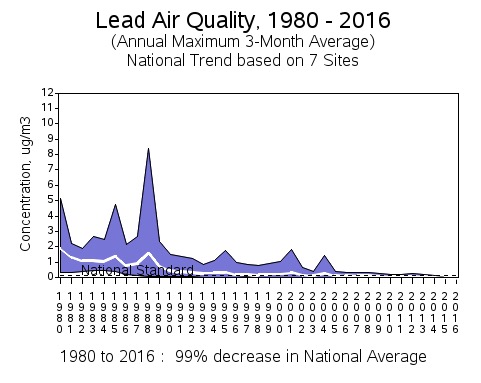 Figure 1. Lead levels in air between 1980-2016 Source: EPA
Figure 1. Lead levels in air between 1980-2016 Source: EPA
3. The claim about 3 million deaths is unsupported, out of context, and also suggests that we are choking to death (and getting stupid at the same time). But it's false. Except for the stupid part, maybe.
Here's the low point in the article (although this is a tough call). Just for dramatic effect, CityLab uses the following photo of Los Angeles from, I don't know when. I doesn't say:
Let's compare this to a pair photos from the EPA site.
Given that ~100% of the lead and 99% of hydrocarbon emissions have been removed from automobile exhaust, you tell me which of these paints an accurate picture.
Assuming that readers want to live long enough to finish this article. I will just show only a few representative examples of half-truths, false associations and study confounders just to give you a flavor of how bad this article tastes.
Mathew bases her article on a supremely junky paper in the Journal of Abnormal Child Psychology by Diana Younan and colleagues. The article and the paper are both huge messes. I'll stick to the article for the sake of clarity.
Perhaps the most ridiculous part of this ridiculous study is the attempt to correct for the following confounders:
No. We can't. At the American Council, we routinely pick apart junk studies and explain the factors that make them junk. I shouldn't even get paid for today. This one was just too easy.
NOTES:
(1) Despite this rant, I need to state that I consider the state of the environment to be hugely important, both personally and scientifically. I am a nature nut-chemist. But I am also a big fan of the truth, and if our air is bad we should address it honestly, not by creating spurious correlations that make for a good headline but also terrible science.
(2) Alex Berezow is our resident expert on air pollution. I suggest that you take a look at the following articles if you wish to be better informed about this topic. Both pieces are from October 2017. The second piece soundly (maybe even rudely) debunks rantings of Daniel Gardner, a history professor, who believes that air pollution in the US is responsible for 200,000 extra deaths per year. Gardner also claims the US should learn from (you gotta be kidding me) China about air pollution. Berezow isn't having any of that. A great read.
(3) Despite utter ineptness in the kitchen (assuming I can even find it) I make the world's best key lime pie. Derek Lowe, despite being brilliant in so many ways, thinks that his recipe is better. Pity the fool.
(4) Still better than eating kale.
"Through original reporting, sharp analysis, and visual storytelling, CityLab informs and inspires the people who are creating the cities of the future—and those who want to live there."As you will see, the above statement isn't terribly accurate. Let's see if we can come up with a something more accurate:
"Through imaginary and/or deceiving reporting, innuendo, shameless manipulation, and visual storytelling, all ofwhich is absolutely devoid of science,CityLab misinforms and inspires the people who are creating the cities of the future to make up a whole bunch more BS that poses for science—and those who want to live in Screwball Land, a place that may or may not exist on a different astral plane."If this sounds harsh it is because I just finished reading a seriously terrible article with a dreadful headline, which was based on an atrocious study. It is nothing more than speculation dressed up as science, and shameless manipulation. And a bunch of lies.
Teresa Mathew, who is an editorial fellow at CityLab, just wrote L.A.'s Air Pollution May Be Harming Teen Brains, should know better. Or maybe she does and wrote it anyhow. For whatever reason, she uses just about every trick in the book to draw an imaginary connection between air pollution (1,2) and brain development in teens.
 |
| Photo: Amazon.com |
"We already know that invisible elements of our environment can harm us: Lead exposure can lower a child’s IQ, and air pollution kills more than 3 million people a year."
Right off the bat, there are three problems:
- "Invisible elements" is the perfect phrase to frighten people. It is both true and false. Of course, there are elements in our environment that can harm us. There always have been. Arsenic is found naturally in well water. Volcanoes give off tons of sulfuric acid. Which invisible elements are we talking about? What is the exposure? The first twelve words of the article tell us nothing, but do a splendid job of planting invisible (and irrational) images in our minds.
- The comment about lead is even worse. It suggests that we (and our children) are bathing in lead, which is lowering IQs all over the place. Left unstated is that since 1980 the levels of lead in the air in the US have declined by 99%. Yes, lead exposure can cause neurological problems in children (and the rest of us) but children are getting 100-times less lead from the air than in 1980 (Figure 1).

3. The claim about 3 million deaths is unsupported, out of context, and also suggests that we are choking to death (and getting stupid at the same time). But it's false. Except for the stupid part, maybe.
"Compared to 1970 vehicle models, new cars, SUVs and pickup trucks are roughly 99 percent cleaner for common pollutants (hydrocarbons, carbon monoxide, nitrogen oxides and particle emissions). New heavy-duty trucks and buses are roughly 99 percent cleaner than 1970 models."Source: Historic success of the Clean Air Act (EPA)
Here's the low point in the article (although this is a tough call). Just for dramatic effect, CityLab uses the following photo of Los Angeles from, I don't know when. I doesn't say:
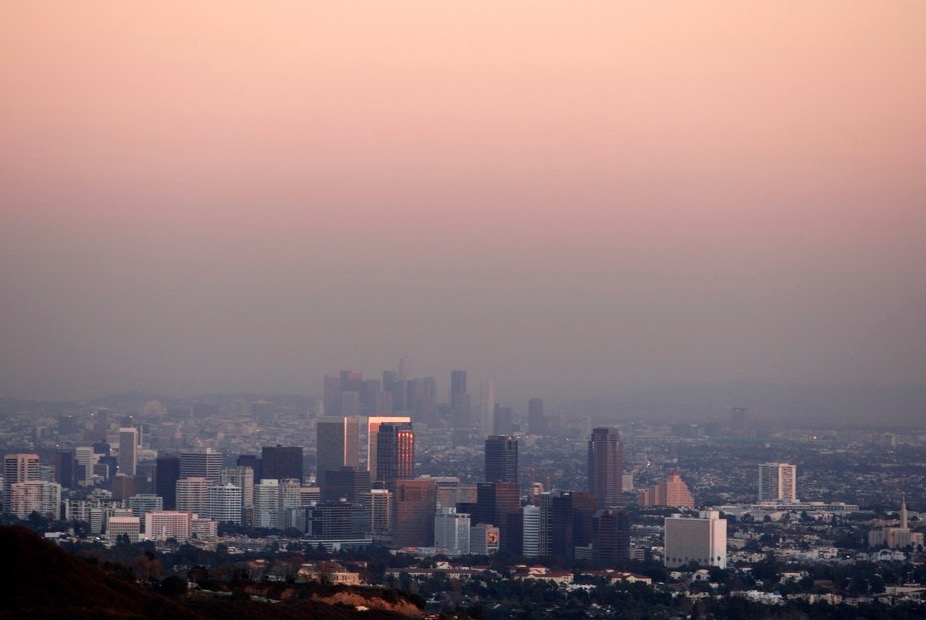 |
| Photo of Los Angeles from CityLab (date unspecified) |
Let's compare this to a pair photos from the EPA site.
Given that ~100% of the lead and 99% of hydrocarbon emissions have been removed from automobile exhaust, you tell me which of these paints an accurate picture.
Assuming that readers want to live long enough to finish this article. I will just show only a few representative examples of half-truths, false associations and study confounders just to give you a flavor of how bad this article tastes.
Mathew bases her article on a supremely junky paper in the Journal of Abnormal Child Psychology by Diana Younan and colleagues. The article and the paper are both huge messes. I'll stick to the article for the sake of clarity.
The study, published last week in the Journal of Abnormal Child Psychology, followed 682 children in greater Los Angeles for nine years from the age of nine to 18. It concluded that air pollution may increase delinquent behavior in adolescents.
- The study is based on four behavioral assessments over a 9-year period. They must be kidding. There is no way that four questionnaires given over a 9-year period are going to measure anything real.
From 2000 to 2014, researchers measured daily air pollution in Southern California. The pollution was measured as particulate matter or PM2.5, which refers to the maximum diameter, 2.5 microns, of the tiny particles measured
- Of all the "stuff" floating around in the air one specific group of particles called PM2.5 was used as a proxy for all air pollution. PM2.5 stands for particles that are 2.5 microns in size or smaller. Why just these particles?
To assess delinquency, researchers asked parents to keep a child-behavior checklist, where they recorded behaviors such as lying, stealing, and substance abuse.
- There's recall bias and there's recall bias. I don't even know what to call this. Do we really believe that a 9-year list of a diverse set of behavioral problems is going to be accurate? And how often do teens tell their parents when they abuse drugs or steal?
'[R]esearchers saw that air pollution estimates were higher in neighborhoods near freeways and with less foliage, and found that delinquent behavior was more prevalent among boys.
- Duh. Who could have imagined? Poorer people live in less desirable areas and are more likely to suffer from behavioral issues.
- Double Duh. Teen boys behave worse than teen girls.
"African Americans, adolescents from lower socioeconomic backgrounds, and those who lived in neighborhoods with limited green space... the effects of air pollution on delinquency were worsened by poor parent-child relationships and social stress."
- Damn! "[T[he effects of air pollution on delinquency were worsened by poor parent-child relationships and social stress." How about delinquency arises from poor parent-child relationships and social stress? Is this not more than enough to explain the entire paper. No, even though the study authors try to control for other variables that would contribute to behavioral problems:
“We saw that [air pollution] was still having an adverse affect, even after for controlling for all these variables,” said Diana Younan, the study’s lead author.
- Seriously? ANY one of those variables (confounders) could be entirely responsible for whatever was measured (and it could easily be argued that nothing was being measured based on four assessments in 9 years.)
"The new study points out that both PM2.5 concentrations and crime rates have been falling in Southern California."
- Now there's some damn fine evidence. The concentration PM2.5s has fallen and so have crime rates. Therefore the particles MUST have caused the behavioral problems and lower IQs . Stranger still is that this made it into the article at all, because there is absolutely no mention of IQ in the Journal of Abnormal Child Psychology paper
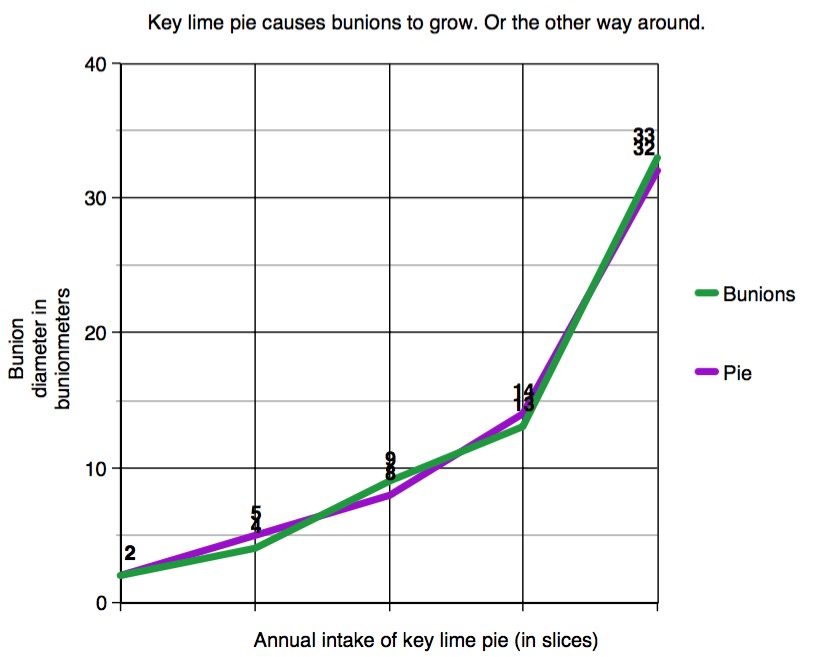 |
| Figure 2. Definitive proof that key lime pie causes big bunions. Or that big bunions cause you to eat more key lime pie |
Perhaps the most ridiculous part of this ridiculous study is the attempt to correct for the following confounders:
- Freeway NOx (nitrogen oxide gas)
- Traffic density in 300 m area
- Neighborhood greenspace in 250 m buffer
- Ambient temperature
- Urbanicity
- Prenatal secondhand smoke exposure
- Maternal depression
No. We can't. At the American Council, we routinely pick apart junk studies and explain the factors that make them junk. I shouldn't even get paid for today. This one was just too easy.
NOTES:
(1) Despite this rant, I need to state that I consider the state of the environment to be hugely important, both personally and scientifically. I am a nature nut-chemist. But I am also a big fan of the truth, and if our air is bad we should address it honestly, not by creating spurious correlations that make for a good headline but also terrible science.
(2) Alex Berezow is our resident expert on air pollution. I suggest that you take a look at the following articles if you wish to be better informed about this topic. Both pieces are from October 2017. The second piece soundly (maybe even rudely) debunks rantings of Daniel Gardner, a history professor, who believes that air pollution in the US is responsible for 200,000 extra deaths per year. Gardner also claims the US should learn from (you gotta be kidding me) China about air pollution. Berezow isn't having any of that. A great read.
(3) Despite utter ineptness in the kitchen (assuming I can even find it) I make the world's best key lime pie. Derek Lowe, despite being brilliant in so many ways, thinks that his recipe is better. Pity the fool.
(4) Still better than eating kale.
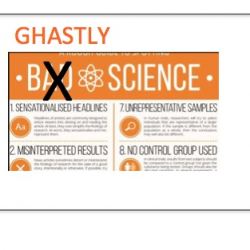
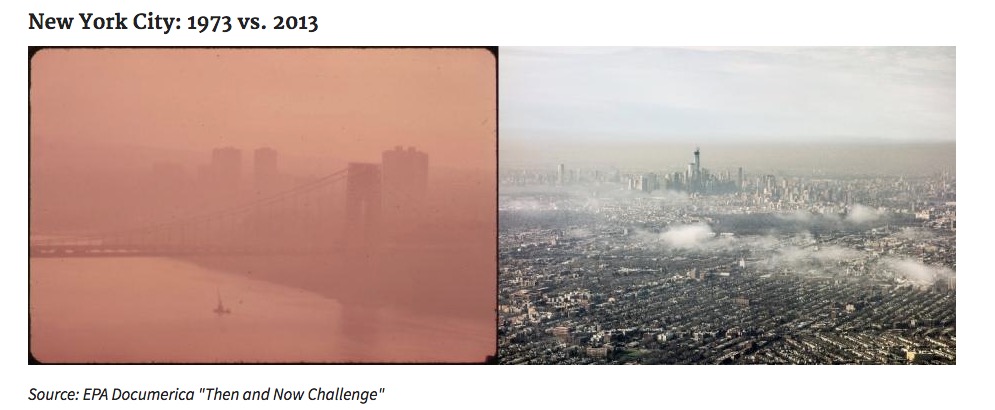
No comments:
Post a Comment